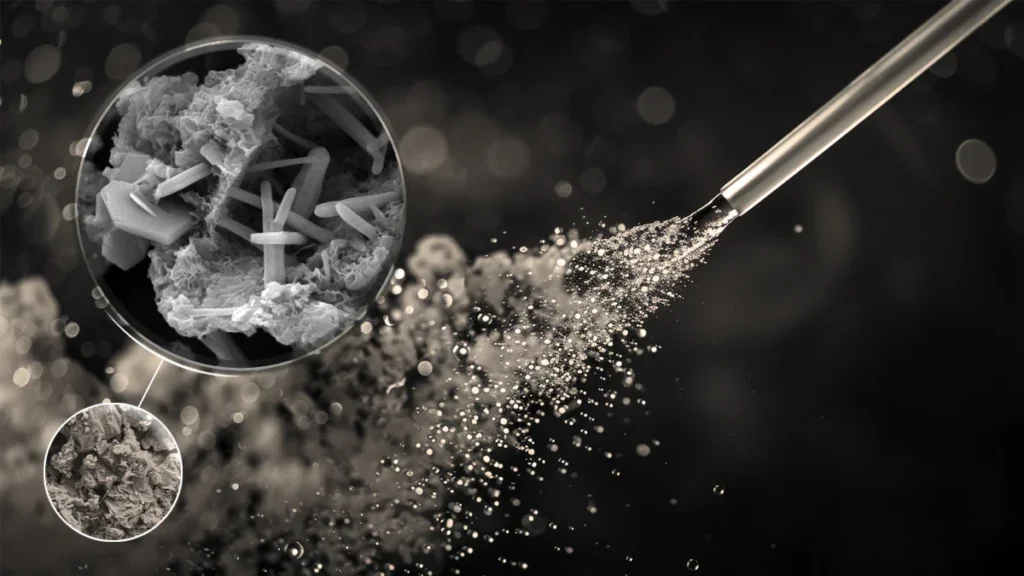A research team from Northwestern University has developed a new process to make concrete, which captures carbon dioxide using fizzy water; this method captured CO2 as high as 45% in efficiency. Therefore, this will not only reduce the quantity of CO2 in the atmosphere but will also produce concretes of more remarkable strengths and durability, hence becoming very crucial prospects in reducing emissions from cement and concrete industries. Credit: Alessandro Rotta Loria/Northwestern University

Carbonated concrete could help cut emissions associated with cement production: By utilizing a carbonated, rather than still, water-based solution during the concrete manufacturing process, engineers led by Northwestern University have found a new way to store carbon dioxide in the ubiquitous construction material.
Not only does the new process help store CO2 from an ever-warming atmosphere, but it also retains its strength and durability without any compromise.
It achieved up to 45% CO 2 sequestration efficiency in laboratory experiments, indicating that nearly half of the CO 2 injected in the course of concrete production was captured and stored. The team is optimistic that their innovative process will offset part of the CO 2 emissions responsible for the cement and concrete industries, which account for about 8% of global greenhouse gas emissions.
Also Read: How is Google helpful in our daily life?
The research was published in Communications Materials, a Nature Portfolio journal.
“The cement and concrete industries are among the largest emitters of human-caused CO2,” said Alessandro Rotta Loria of Northwestern, who led the study. “We are trying to develop approaches that reduce CO2 emissions associated with those industries and, eventually, could turn cement and concrete into massive ‘carbon sinks.’ We are not there yet, but we now have a new method to re-use some of the CO2 emitted as a result of concrete manufacturing in this very same material.”. “And our solution has very low tech content, so for industry it should not be too hard to implement.”
“More interestingly, the approach to accelerate and accentuate the carbonation process of cement-based materials provides an opportunity to engineer new clinker-based products where CO2 becomes a key ingredient”, added the coauthor of the study Davide Zampini vice-president of global research and development at CEMEX.
Rotta Loria is the Louis Berger Assistant Professor of Civil and Environmental Engineering in Northwestern’s McCormick School of Engineering. This research was a collaboration between the laboratory of Rotta Loria and CEMEX, a global building materials company with a focus on sustainable construction.
Limitations of prior processes
It’s an immovable part of infrastructure: Concrete is one of the most consumed materials on Earth — second only to water. Most simply, workers create concrete by mixing together water, fine aggregates like sand, coarse aggregates like gravel and cement that binds all the ingredients together. Since the 1970s, previous researchers have found various ways to store CO2 inside concrete.
“The idea is that cement itself already reacts with CO2,” Rotta Loria said. “That’s why concretely structures already absorb CO2 naturally. However, certainly, this CO2 absorbed by the concrete itself is a small fraction of the CO2 emitted to produce the cement needed to generate this concrete.”
Processes to store CO2 fall into one of two varieties : hardened concrete carbonation or fresh concrete carbonation. The former literally involves placing blocks of already hardened concrete into chambers where CO2 gas would be injected at very high pressures, and then allowing the gas to be carbonated into the concrete. In the fresh version, at the time concrete is produced, workers inject CO2 gas into the mixture of water, cement, and aggregates.
Of the CO2 injected in both approaches, some react with cement to form solid calcium carbonate crystals. Yet both techniques harbor deal-breaking limitations : low CO2 capture efficiency and high energy consumption. Even worse: The resulting concrete is often weakened, hampering its applicability.
Uncompromised strength
Now, let’s turn to the new approach of Northwestern. The researchers exploited in their work the process of concrete carbonation. However, instead of CO2 injection in mixing all ingredients together, first, they injected a CO2 gas into water mixed with a small amount of cement powder. Then, having mixed this carbonated suspension with the rest of cement and aggregates, they came up with concrete that actually absorbed CO2 in the course of its manufacturing.
“The cement suspension carbonated in our approach is a much lower viscosity fluid compared to the mix of water, cement and aggregates that is customarily used in current approaches to carbonate fresh concrete,” Rotta Loria said. “So we can mix it very fast, leveraging a very fast kinetics of the chemical reactions which lead to calcium carbonate minerals).”. The result is a solid product that is dense in calcium carbonate minerals, in contrast to when CO2 is introduced to the fresh concrete mix.’)
Their studies on carbonated concrete revealed its strength to be at par with regular concrete.
“A typical limitation of carbonation approaches is that strength is often influenced by the chemical reactions,” said Rotta Loria. “But our experiments point out that it could actually be higher in strength. We still need to test this further but at a minimum, we can say that it’s uncompromised. Because the strength is uncompromised, the applications don’t change either. Beams, slabs, columns, foundations — everything we currently use concrete for.”
“The results of this study underline that, although carbonation of cement-based materials is a known reaction, there is still some room to further optimize the CO2 uptake through a deeper understanding of the mechanisms related to materials processing,” said Zampini.
Source: SciTechDaily
Read More News Here

